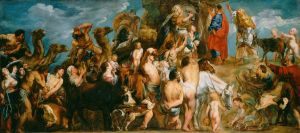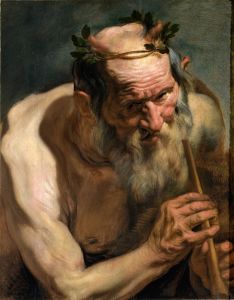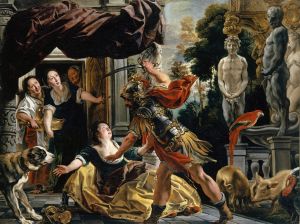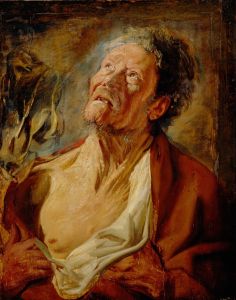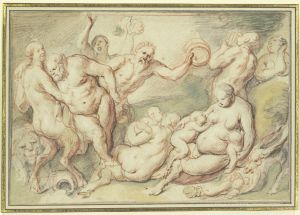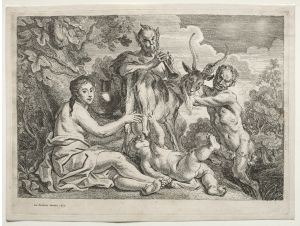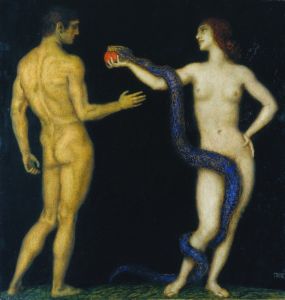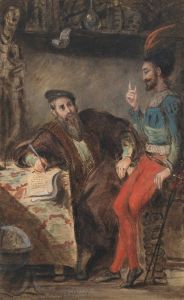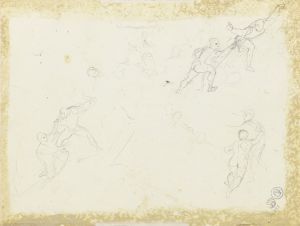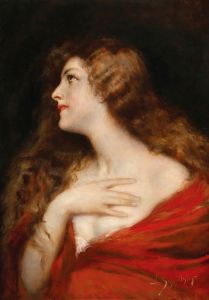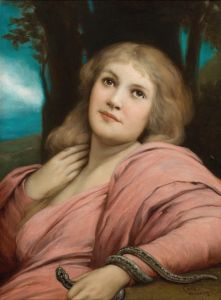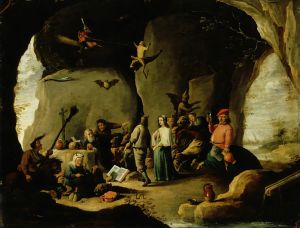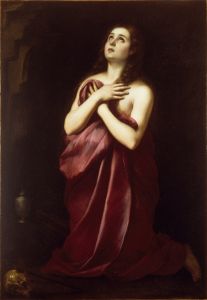
The Temptation of the Magdalene
A hand-painted replica of Jacob Jordaens’s masterpiece The Temptation of the Magdalene, meticulously crafted by professional artists to capture the true essence of the original. Each piece is created with museum-quality canvas and rare mineral pigments, carefully painted by experienced artists with delicate brushstrokes and rich, layered colors to perfectly recreate the texture of the original artwork. Unlike machine-printed reproductions, this hand-painted version brings the painting to life, infused with the artist’s emotions and skill in every stroke. Whether for personal collection or home decoration, it instantly elevates the artistic atmosphere of any space.
Jacob Jordaens, a prominent Flemish Baroque painter, is known for his dynamic compositions and vibrant use of color. One of his notable works is "The Temptation of the Magdalene," which reflects his mastery in depicting religious themes with a unique blend of realism and theatricality. Jordaens was part of the Antwerp school and was influenced by the works of Peter Paul Rubens, with whom he shared a similar style characterized by robust figures and dramatic lighting.
"The Temptation of the Magdalene" illustrates a biblical scene involving Mary Magdalene, a figure often depicted in Christian art as a symbol of repentance and redemption. In this painting, Jordaens captures the moment of temptation, a theme that resonates with the Baroque era's interest in human emotion and moral conflict. The artwork is notable for its rich color palette and the expressive gestures of its figures, which are hallmarks of Jordaens' style.
Jordaens' interpretation of the Magdalene's story is both personal and reflective of the broader cultural and religious context of 17th-century Flanders. During this period, the Catholic Church was a significant patron of the arts, commissioning works that conveyed religious narratives and moral lessons. Artists like Jordaens were tasked with creating images that not only depicted biblical stories but also engaged viewers on an emotional level, encouraging them to reflect on their own spiritual journeys.
In "The Temptation of the Magdalene," Jordaens employs a composition that draws the viewer's eye towards the central figure of Mary Magdalene. Her expression and posture convey a sense of inner turmoil, capturing the essence of temptation and the struggle between sin and salvation. The surrounding figures, possibly representing angels or tempters, add to the narrative tension, creating a dynamic interplay of forces that is characteristic of Baroque art.
Jordaens' use of light and shadow enhances the dramatic effect of the scene, a technique that he mastered through his study of Caravaggio and other Baroque artists. The contrast between light and dark areas not only adds depth to the composition but also symbolizes the moral dichotomy faced by the Magdalene. This interplay of light serves to highlight the emotional intensity of the moment, drawing the viewer into the psychological drama unfolding on the canvas.
While Jordaens is often overshadowed by his contemporary Rubens, his contributions to Baroque art are significant. His ability to convey complex human emotions and moral themes through vivid imagery and dynamic compositions has earned him a lasting place in the history of art. "The Temptation of the Magdalene" exemplifies Jordaens' skill in blending narrative content with artistic expression, making it a valuable piece for understanding the religious and cultural milieu of his time.
Overall, Jacob Jordaens' "The Temptation of the Magdalene" is a testament to his artistic prowess and his ability to engage with the spiritual and moral questions of his era. Through this work, Jordaens invites viewers to contemplate the nature of temptation and redemption, themes that continue to resonate in the human experience.





